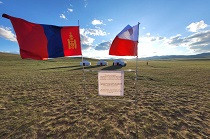 Following an agreement between the National Geological Institute – PIB and the National Geological Survey of Mongolia (NGS), PIG-PIB staff conducted field work near Bayanbulag in the Bayankhongor aymak, Beliin Bulag exploration area. The purpose of the research is to analyse the potential for the occurrence of critical raw materials, with a particular focus on molybdenum and tungsten.
Following an agreement between the National Geological Institute – PIB and the National Geological Survey of Mongolia (NGS), PIG-PIB staff conducted field work near Bayanbulag in the Bayankhongor aymak, Beliin Bulag exploration area. The purpose of the research is to analyse the potential for the occurrence of critical raw materials, with a particular focus on molybdenum and tungsten.
The first team conducted the survey work from 13 June to 18 July 2023. Another team, which set out to explore the Zadgai Bulag area in mid-July, will complete the reconnaissance in late August. Moreover, the geologists responsible for the work methodology in both areas and bilateral arrangements with the project partners also carried out their work in July.
The expedition of PGI-PIB employees to Mongolia renews Polish-Mongolian cooperation in the field of geology, which included a research project a decade ago in the Khasagt Mountains, Gobiya Altai. Beliin Bulag.
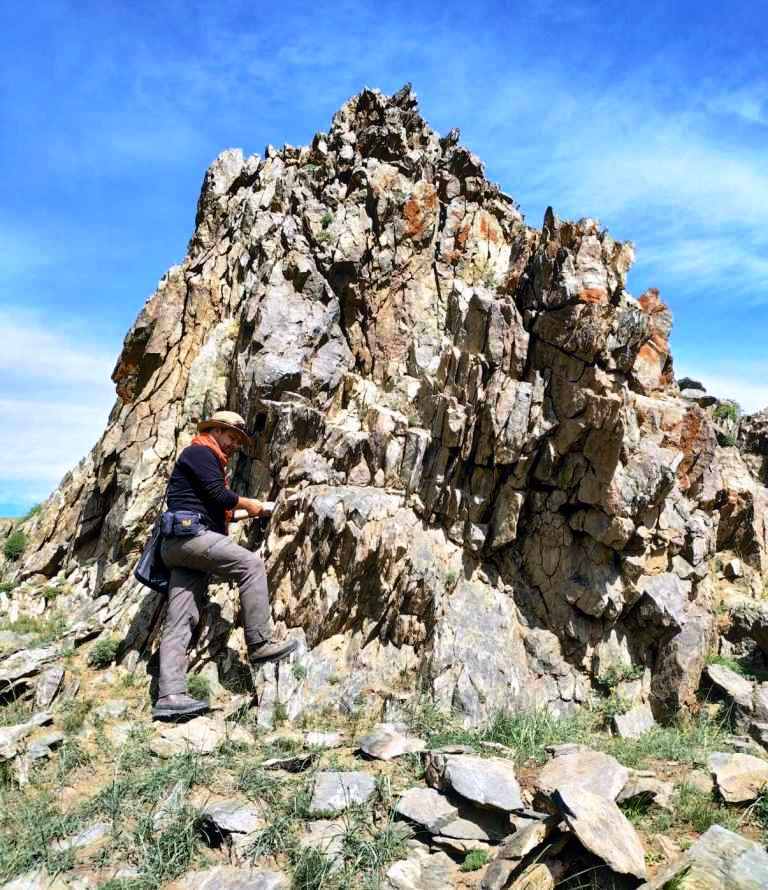
Rafał Sikora making structural measurements in metamorphic shield rocks (photo by R. Nasiłowski)
The Beliin Bulag (BB) area is located in the south-western part of the Changai Mountains. It is characterised by mountainous relief, and works are carried out at altitudes between 2,300 and 3,000 m a.s.l. By geological structure, the study area is located in the Central Asian Orogenic Belt (CAOB) zone, in the southern part of the Permo-Triassic Selengi magmatic belt, bordering the Proterozoic Baidrag Cratonic Terrane. The bedrock of the study area comprises mainly Permian-age granitoids, accompanied by numerous enclaves and intrusions of gabbros, diorites and aplites. There are also Proterozoic crystalline limestones within the granitoids, and zones of skarns at the interface of both lithologies. Metamorphic cover rocks occupy a small part of the study area.
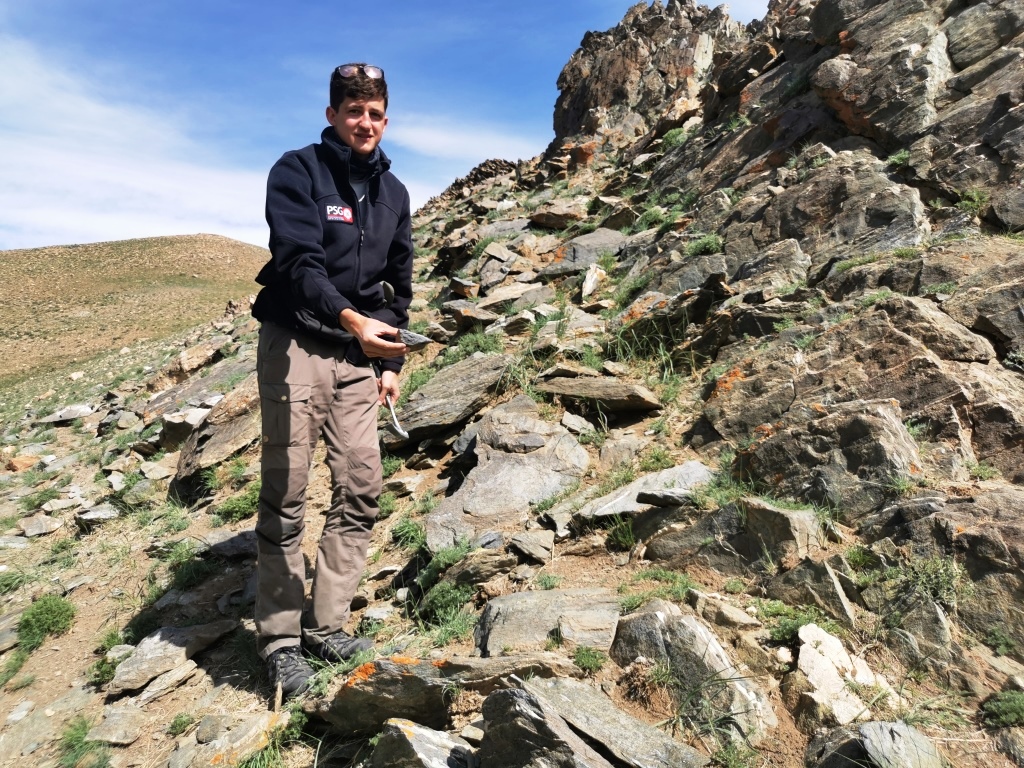
Kamil Bulcewicz while taking a sample for petrological studies (photo by R. Sikora)
During the fieldwork, the PGI-PIB staff paid special attention to zones of skarns, intrusive contacts, quartz veins and pegmatites which may be enriched in valuable elements. The work in the BB area is led by dr Rafał Sikora from the Geo Threat Centre, who, together with dr Paweł Urbański from the Department of Regional Geology have long years of experience working in Mongolia. They pass on their field experience to their younger colleagues: Rafał Nasiłowski from the Department of Compositional and Economic Geology, Bartłomiej Grochmal and Kamil Bulcewicz (both from the Lower Silesian Branch of PGI-PIB).
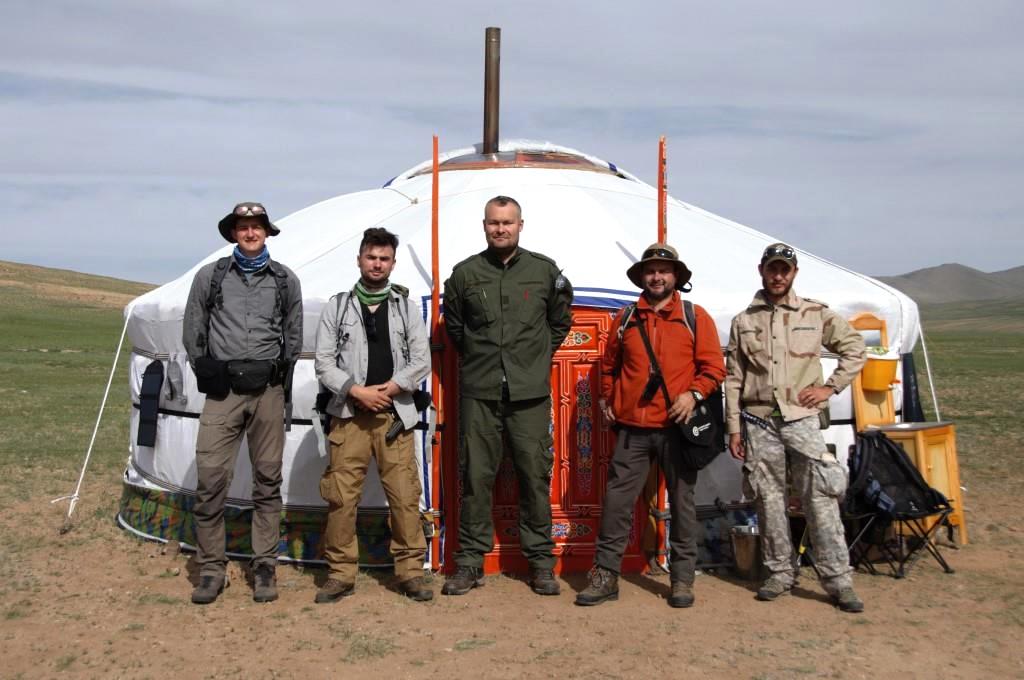
The Polish research group in front of the yurt (from left: Kamil Bulcewicz, Rafał Nasiłowski, Paweł Urbański, Rafał Sikora i Bartłomiej Grochmal, photo by K. Bulcewicz)
The presence of experts in various fields (deposit geology, tectonics, cartography and petrology) resulted in valuable discussions and exchange of concepts as early as at the field survey stage, having a positive impact on project implementation.
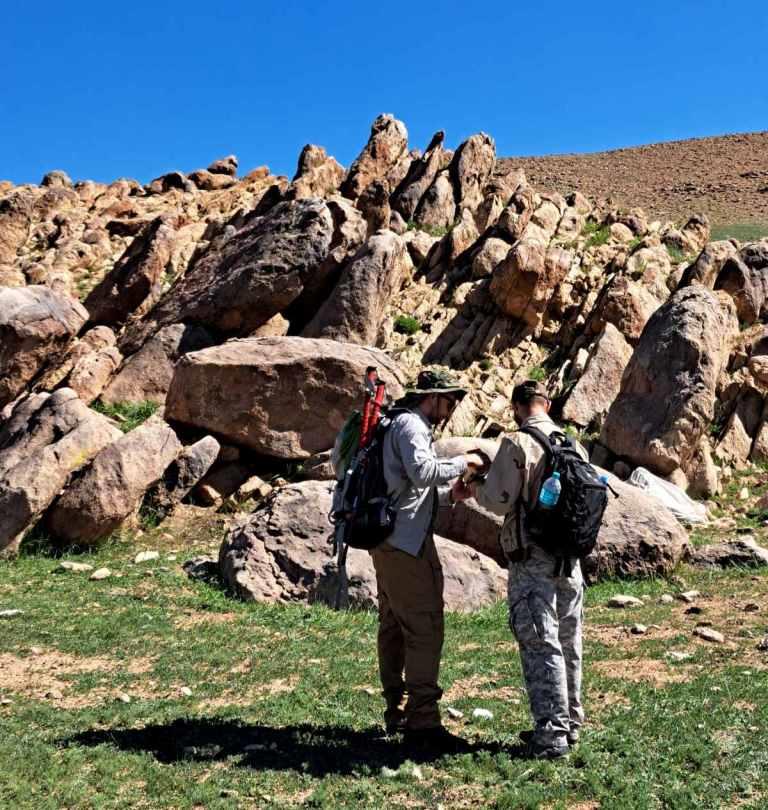
Rafał Nasiłowski and Bartłomiej Grochmal during fieldwork (photo by K. Bulcewicz)
The analyses are performed far from large urban centres, at high altitudes, and with significant temperature amplitudes, gusty winds, hail and snowfall, which is important from the point of view of logistics, work organisation and occupational health and safety. Working in the harsh climate and camp conditions (including accommodation in yurts, with no running water, open air toilets) is quite a challenge to the geologists involved in the project.

The camp of the Polish-Mongolian geological expedition in Bayanbulag (Changai Mountains, photo by R. Nasiłowski)
As part of reconnaissance, besides geological observations, lithology survey and description of exposures, PGI-PIB staff carry out chemical analyses with portable XRF spectrometers, schlich studies of alluvium and take samples for lithogeochemical, petrographic and chronostratigraphic studies. Laboratory tests under the project will be carried out in both Mongolia and Poland.
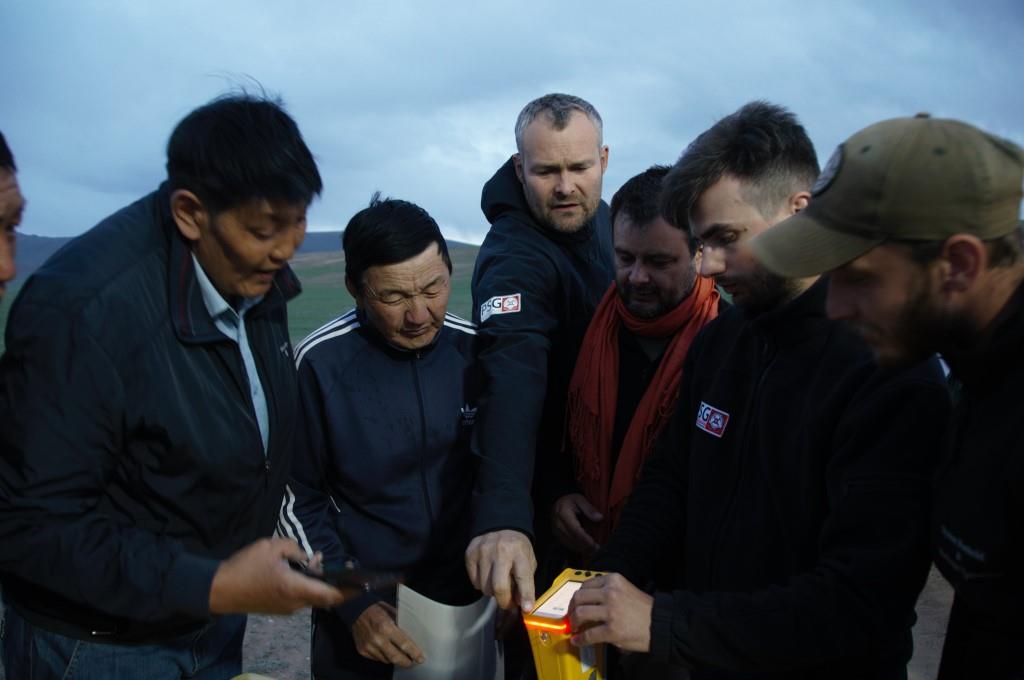
Dr Pawel Urbanski explains rock measurements with the XRF spectrometer to the Bayanbulag soma authorities
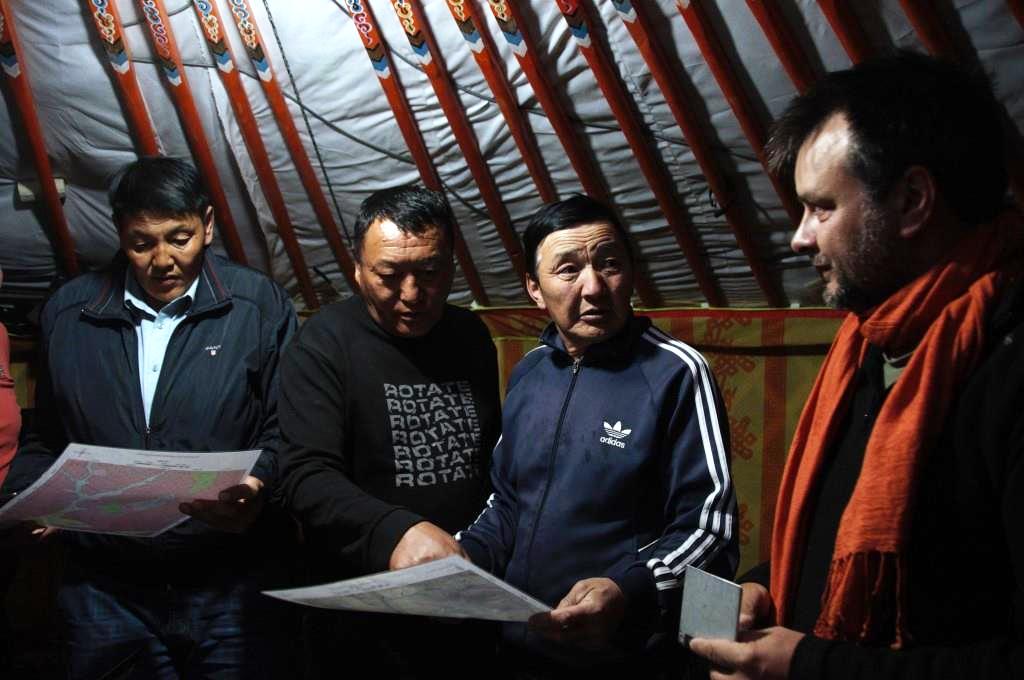
Dr Rafał Sikora explains the geology and relief to the Bayanbulag somon authorities in the field yurt office (photo by Khana)
Before starting field work, the expedition participants gained the approval of the local authorities. The Mongolian people are bound by their traditions and, most importantly, aware of the raw material potential and natural values of their country. For this reason, the custom requires to notify the local authorities of the purpose and scope of the study. By meeting with representatives of the local community, it is possible to gain their trust and avoid potential misunderstandings. People living in the area are well aware of the environmental impact of the possible exploitation of the deposits. For a society largely made up of shepherds, conservation issues are very important.
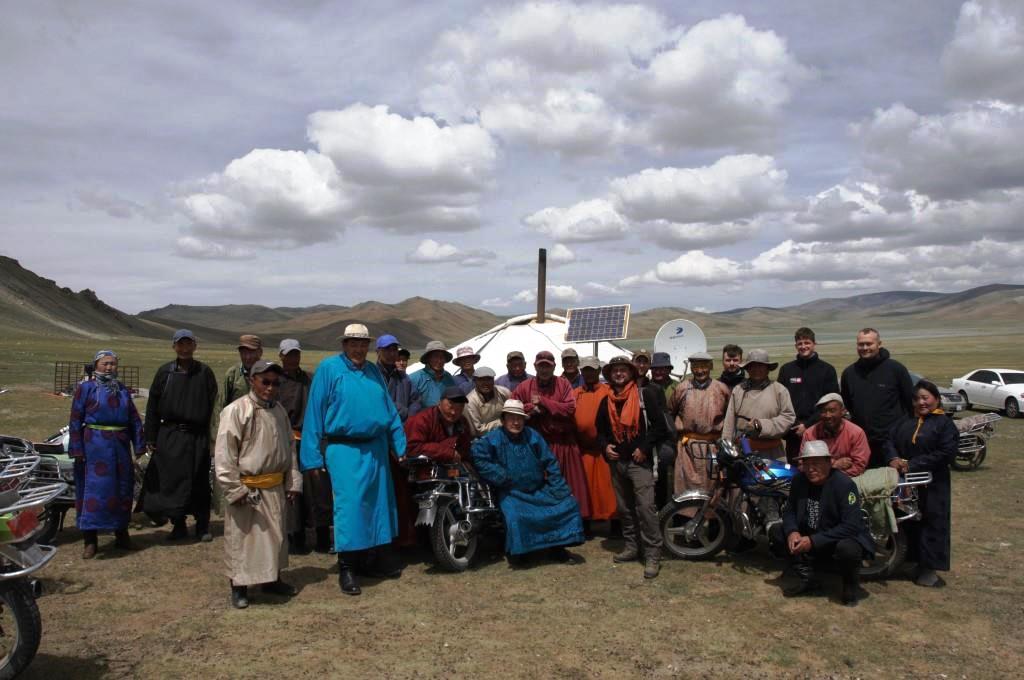
A commemorative photograph of the shepherd elders and the authorities of Bayanbulag somon meeting, with the special participation of the Polish research group (photo by K. Bulcewicz)
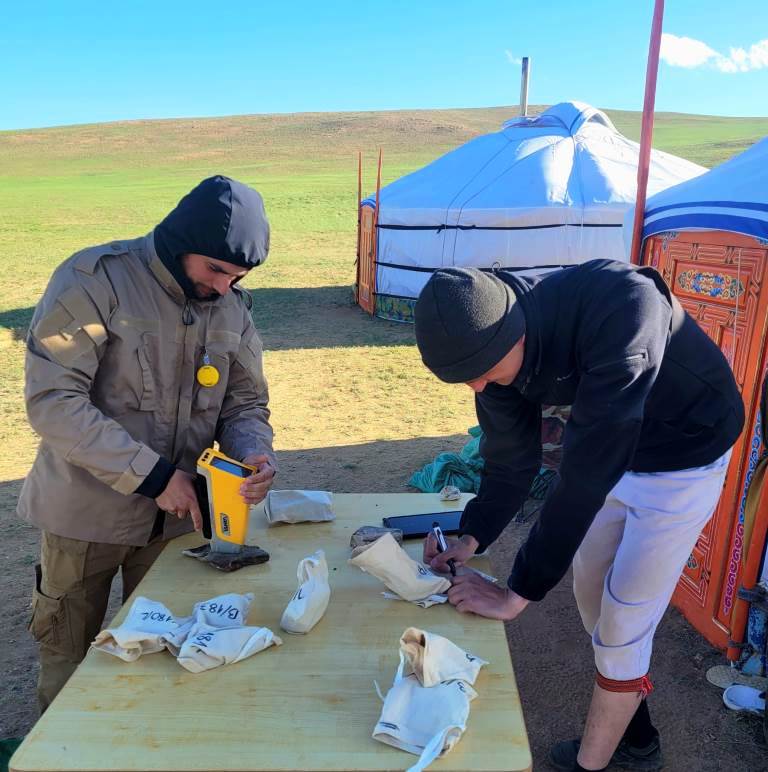
Each day ends with in-house work and XRF measurements of the collected rock samples. In the photo: Rafał Nasiłowski and Kamil Bulcewicz (photo by P. Urbański
Text: Rafał Sikora














 PGI-NRI offer
PGI-NRI offer Mineral resources of Poland
Mineral resources of Poland  Oil and Gas in Poland
Oil and Gas in Poland 




 Subscribe to RSS Feed
Subscribe to RSS Feed